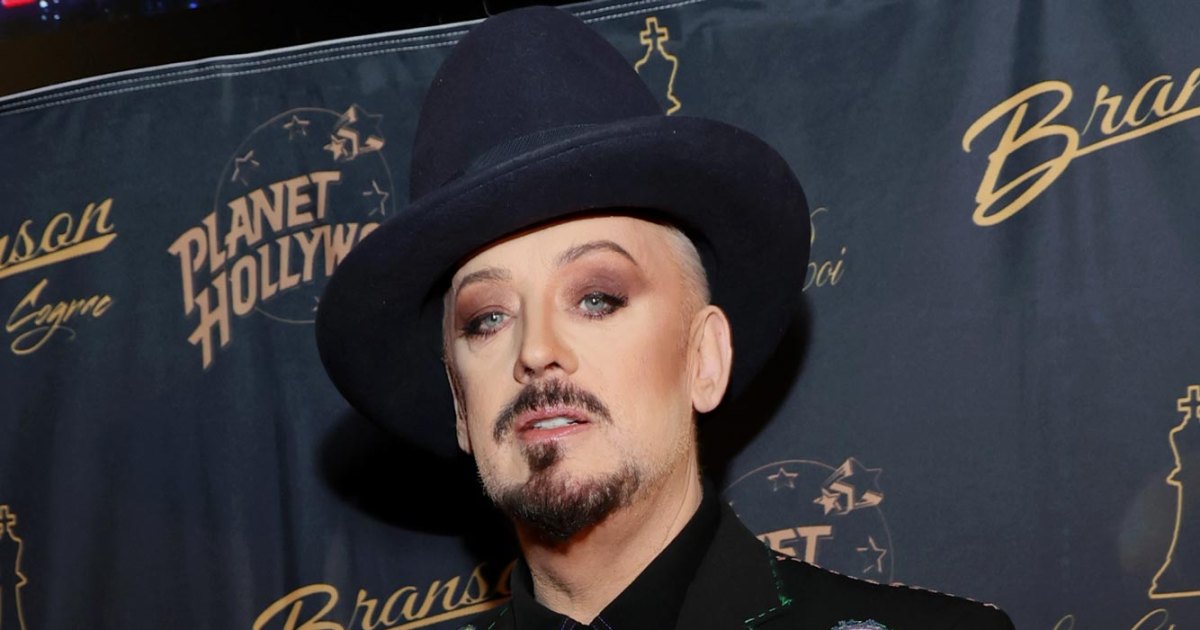Boy George Shares His Thoughts on Sia’s Take of ‘Do You Really Want to Hurt Me’
In a recent interview, Boy George, the iconic lead singer of Culture Club, opened up about Sia’s reinterpretation of his classic hit, “Do You Really Want to Hurt Me.” This song, released in 1982, became an anthem for a generation, resonating with themes of love, pain, and vulnerability. Boy George’s reflections on Sia’s rendition reveal not only his personal sentiments but also highlight the evolving nature of music and the connections that can be formed between artists across generations.
Understanding the Original: A Classic Revisited
“Do You Really Want to Hurt Me” is one of Boy George’s most recognizable songs. With its haunting melody and poignant lyrics, it explores the complexities of relationships and the emotional turmoil that often accompanies love. The track’s success helped establish Boy George as a significant figure in the music industry, and it has been covered and sampled by numerous artists over the years.
Boy George’s distinctive voice and style brought a unique flair to the song, creating an enduring legacy. Today, the song is celebrated not just for its catchy tune but also for its deeper messages about suffering and emotional honesty. As music evolves, reinterpretations of classic tracks provide fresh perspectives and allow new generations to connect with timeless themes.
Sia’s Unique Interpretation
Sia, known for her powerful vocals and emotive songwriting, has taken a bold step by reimagining “Do You Really Want to Hurt Me.” Her version brings a contemporary twist to the classic, infusing it with her signature style that blends pop with emotional depth. Fans have noted how Sia’s interpretation maintains the essence of the original while offering a fresh take that resonates with today’s audience.
In her rendition, Sia utilizes her unique vocal techniques and emotional delivery to evoke the song’s themes of pain and longing. This has sparked discussions about how artists can reinterpret and reshape the narratives of songs from previous decades while still honoring the original intent.
Boy George’s Reflections on Sia’s Take
In his recent commentary, Boy George expressed admiration for Sia’s artistry. He noted that her ability to convey emotion through her music aligns with the core message of “Do You Really Want to Hurt Me.” Boy George stated, “It’s amazing to see how the song has evolved and how artists like Sia can bring their own experiences and feelings into it. Music is a living thing, and it grows with each generation.”
This sentiment highlights a critical aspect of music: its capacity to transcend time and connect different generations of artists. Boy George’s acknowledgment of Sia’s contribution underscores the importance of collaboration and reinterpretation in the music industry.
The Evolution of Music and Intergenerational Connections
The music landscape has witnessed significant changes over the decades. From the rise of digital platforms to the blending of genres, contemporary artists have more tools than ever to express themselves. Sia’s take on Boy George’s classic is a testament to this evolution, showcasing how new technologies and artistic expressions can breathe new life into old favorites.
- Influence of Technology: Modern recording techniques and digital distribution have enabled artists to reach wider audiences, allowing for more diverse interpretations of classic songs.
- Collaboration Across Generations: Today’s artists often collaborate with veterans of the industry, creating a dialogue that enriches their work and fosters mutual respect.
- Emotional Resonance: Themes of love, hurt, and vulnerability are universal, making them timeless. Artists like Sia tap into these themes, resonating with both their generation and those who came before.
The Importance of Artistic Expression
Boy George’s reflections on Sia’s version of “Do You Really Want to Hurt Me” also speak to the broader importance of artistic expression in society. Music serves as a powerful medium for individuals to explore complex emotions and share their experiences. Through reinterpretations, artists have the opportunity to present their narratives, fostering empathy and understanding among listeners.
Moreover, the act of covering a song can be seen as a form of respect and homage to the original artist. When Sia chose to reinterpret Boy George’s work, she not only showcased her vocal talent but also honored the emotional depth of the original composition. This mutual respect between artists across generations is crucial for the continued growth of the music industry.
Conclusion: A Celebration of Music’s Legacy
Boy George’s insights into Sia’s interpretation of “Do You Really Want to Hurt Me” remind us of the power of music to connect people across time and space. As artists reinterpret and breathe new life into classic songs, they create a bridge between generations, allowing for shared experiences and emotional resonance. This not only honors the original work but also enriches the music landscape, making it more vibrant and diverse.
As we continue to witness reinterpretations of beloved songs, it is essential to embrace the conversations they spark and the connections they foster. Boy George’s appreciation for Sia’s take serves as a reminder that music is not static; it is a dynamic and evolving form of expression that reflects the human experience in all its complexity.
See more CNET Live

